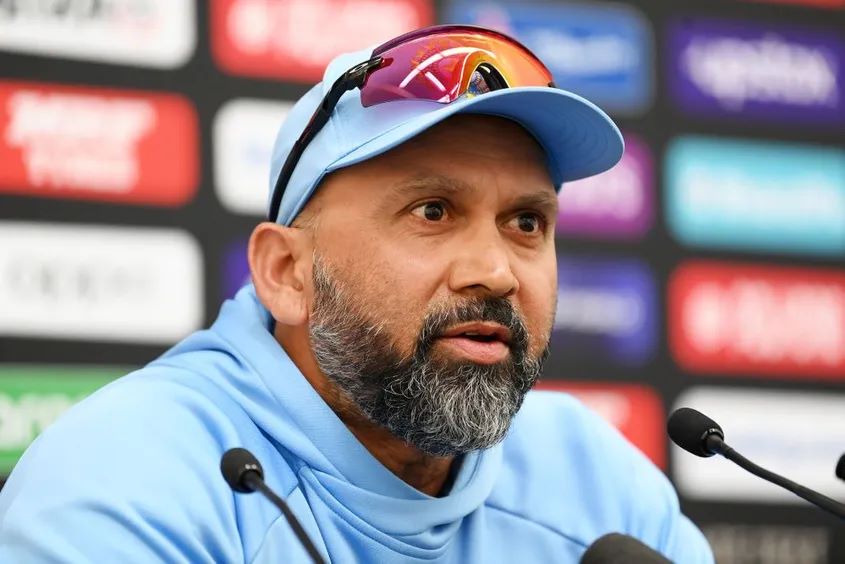
Written By Vaibhav Tripathi
According to Paras Mhambrey, India’s bowling coach, the decision to exclude Ravichandran Ashwin, the off-spinner currently ranked No.1 in the Test format, from the World Test Championship (WTC) final was influenced by the conditions observed on the morning of the match. Mhambrey also expressed his concerns about the bowlers’ performance, noting that they appeared flat and lacked discipline after the initial hour on day one. That allowed the Australian batsmen to score freely and reach a total of 327 for 3 by the end of the opening day.
Considering the conditions at The Oval, India decided not to include Ashwin in the XI. They chose to go with the combination of four pace-bowling options and one frontline spinner, which had proved effective during their previous match at the same venue in 2021.
“See, it’s always a very difficult decision to drop a champion bowler like that,” said Mhambrey at the press conference after the opening day’s play. “But looking at the conditions in the morning, I thought having the additional seamer would definitely be beneficial. And it has also worked in the past. If you look at the earlier games that we played, the last Test match [in 2021], we went in four seamers, which worked really well. The seamers have done well out here for us. But you can always look at it in hindsight, and say the additional spinner would have been different.”
On the first day, Umesh Yadav’s contribution with the ball was limited to just 14 overs, the fewest among all the pace bowlers. Unfortunately, he had a challenging start to the match, conceding a significant number of runs initially. As a result, Rohit Sharma employed him carefully, considering his lack of effectiveness. It was not only Umesh, but the entire Indian bowling attack struggled with their discipline after dismissing Marnus Labuschagne early in the second session.
“Yeah, Umesh (Yadav) is fine,” said Mhambrey when questioned about his fitness. “I think there is no niggle. In terms of the bowling, I thought we could have been more disciplined. Definitely. I thought we started off very well. The first 12 overs, first 15 overs, I think we really bowled in the right areas. But maybe after a little bit, I thought we kind of weren’t disciplined with our bowling. And that’s one of the reasons I thought we conceded more runs that we ideally would have preferred. But yeah, we definitely should have been a little more disciplined.”
In the opening session, Mohammed Shami and Mohammed Siraj showcased their skills under overcast conditions. However, as the sun emerged, Travis Head and Steven Smith dominated, forming an unbroken partnership of 251 runs. Despite India taking the second new ball late in the day, they couldn’t dismiss either Head or Smith.
“I thought conditions today obviously, like the wicket, got better. But the second new ball that we took, we saw that the ball was getting a little seam [movement]. So definitely, tomorrow morning will be an important session for us. If we take a few wickets quickly, then definitely we have an opportunity to come back in the game.”
The Oval wicket has historically favored spinners in the latter stages of a Test match, making Ashwin’s omission all the more puzzling. In the presence of a slight grass covering and under overcast conditions, India chose to field a four-pronged pace attack.
“I think when you discuss with the team, not only on the first day, you know about the conditions for quite some time. We have been practicing for three to four days. We are looking at the wicket, how it is. I think that conversation happens with the player. Obviously, we have to be honest about our strategies.
“But your combination is also important. So, you discuss which combination should be played on the wicket. Yes, he [Ashwin] is a world-class bowler. Definitely, no doubt about it. But I think when we have a conversation, the player also understands that if a decision is taken, it is taken for the team’s benefit.”




